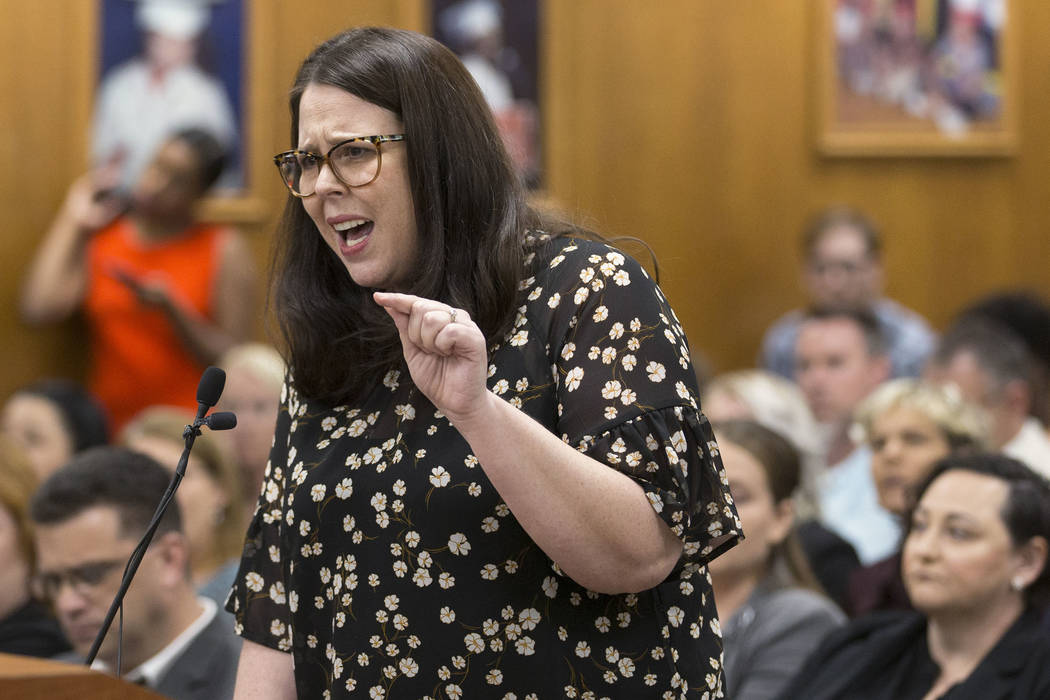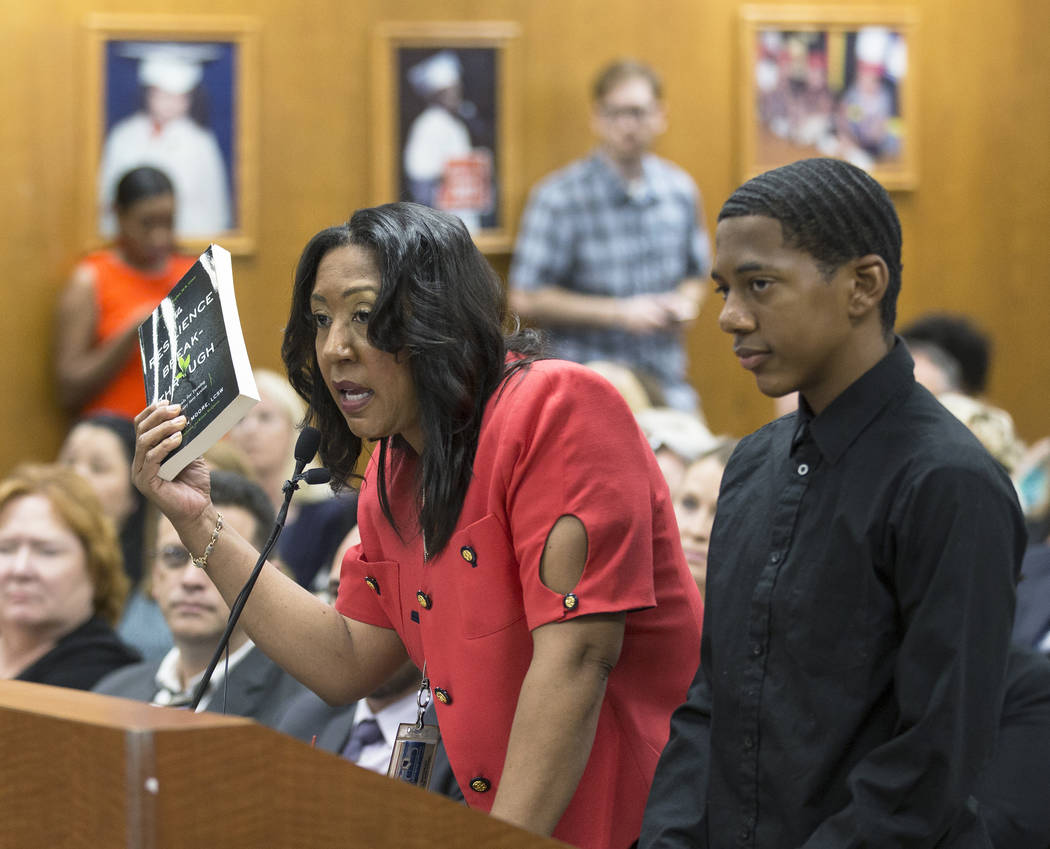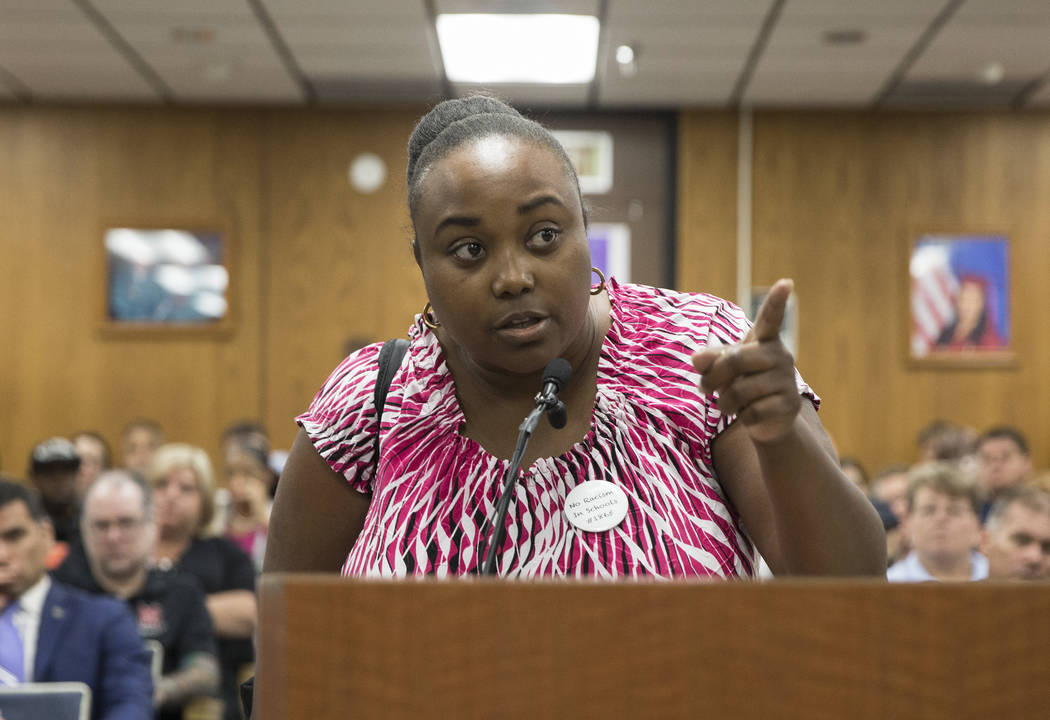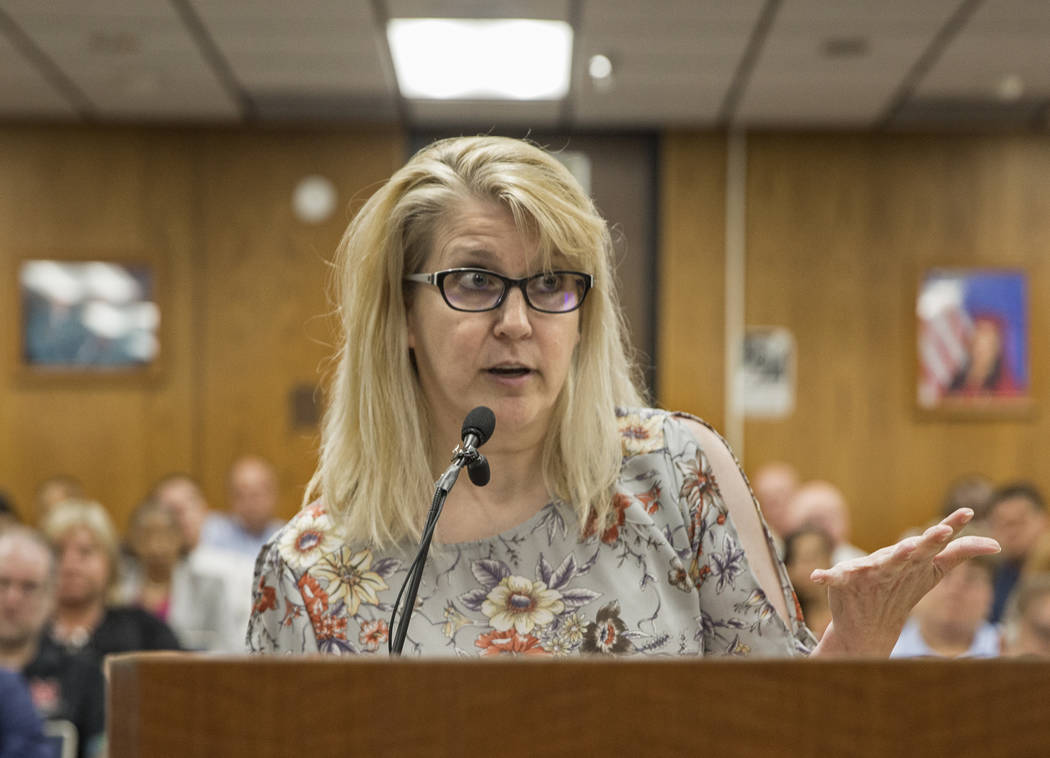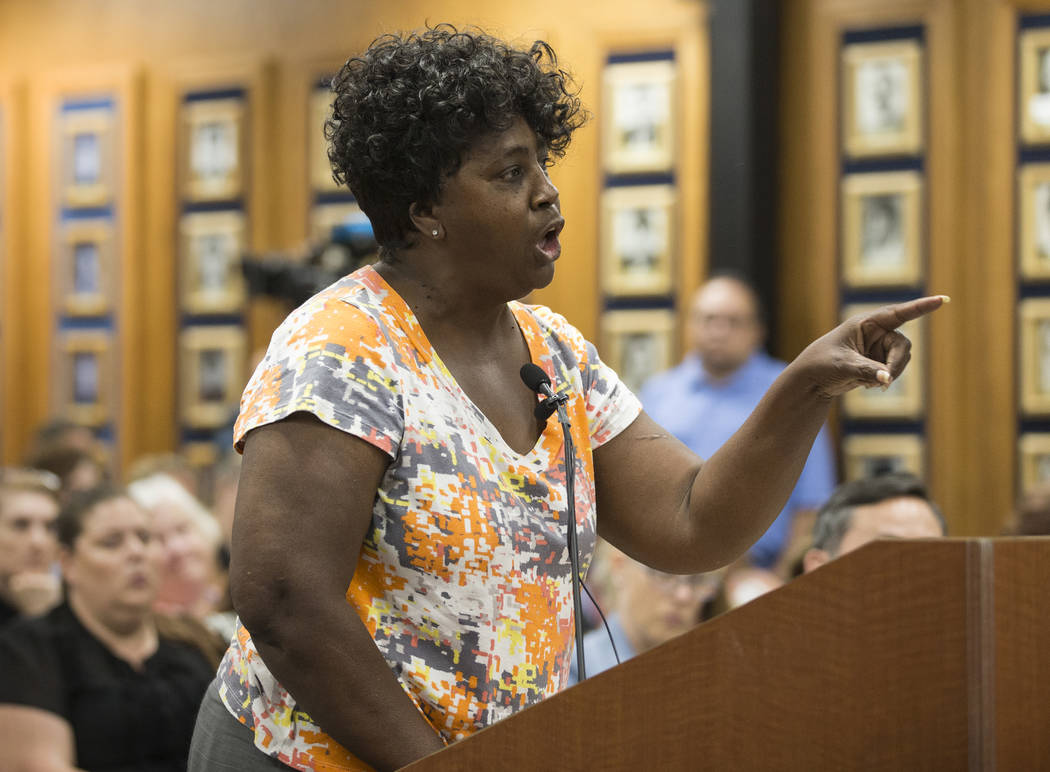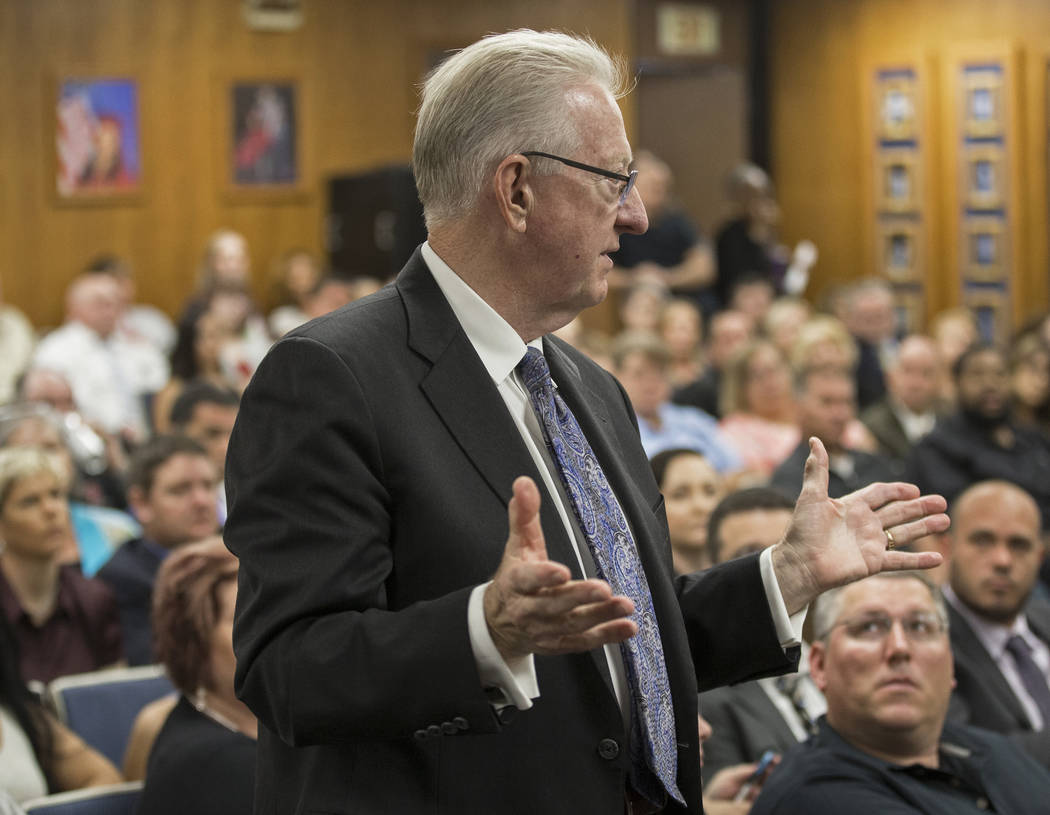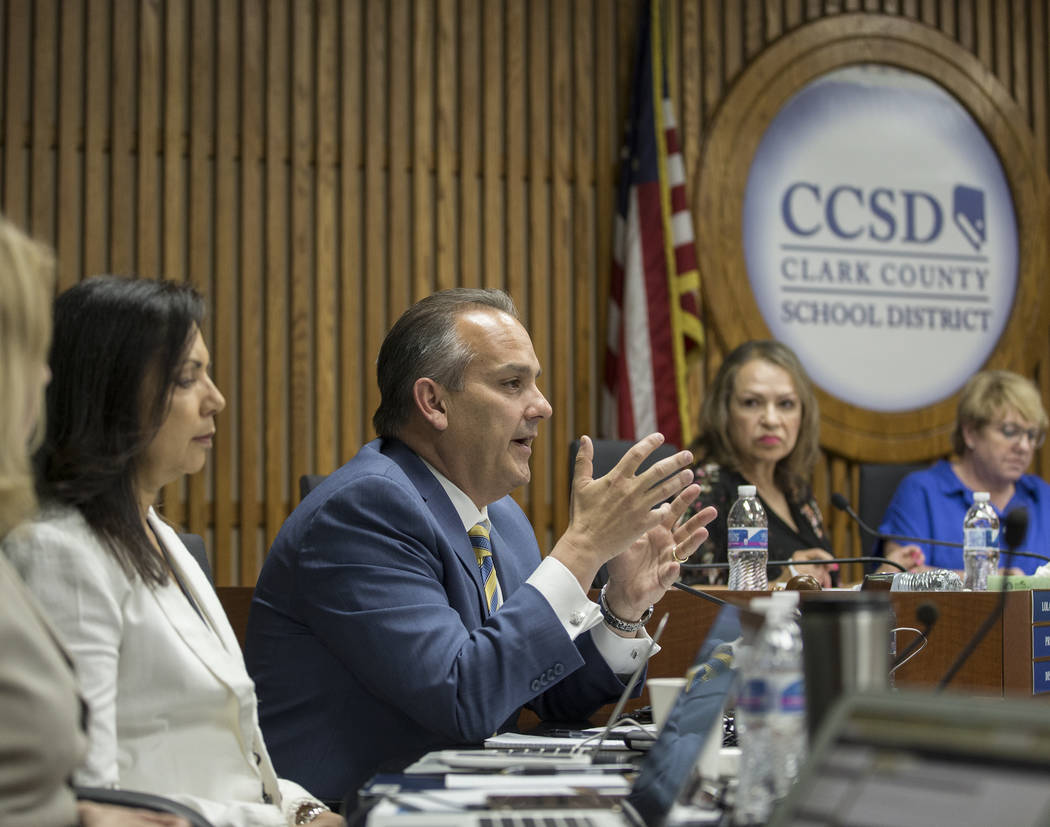VICTOR JOECKS: CCSD has the money it needs to rehire deans
Charlie Brown never figured out that Lucy was always going to yank the football away. It’s an open question as to whether the public will ever figure out that “more money” will never be enough for the Clark County School District.
Over the next two years, the school district will receive almost $400 million in additional funding. It will receive $154 million more next school year and $244 million more the following year. The district presents this as a $90 million increase in the second year, because the first year money will create ongoing expenses. Those are hefty increases for a general fund of around $2.5 billion.
So why did Superintendent Jesus Jara unexpectedly eliminate every dean position in the middle and high schools last week? Because, compared to the last school year, the district wanted to spend $167 million more next year and $279 million more the year after that.
This is the part of the equation that the “spend more” crowd ignores. It doesn’t matter how much additional money Nevada funnels to education, it will never be enough if the target keeps moving.
It’s like walking into the store with a dollar in your pocket to buy a candy bar, only to discover it costs $1.25. You leave and come back with $1.30, only to discover the store raised the price to $1.40.
Why don’t you have the candy bar you want? Do you not have enough money or do you blame the store, leave and buy your candy bar for 75 cents somewhere else? The education establishment has a financial incentive to get the public to believe the first option. But after 60 years of spending increases, it’s time to realize Nevada’s education funding problems stem from an inability and unwillingness to control costs.
Usually, it’s collective bargaining driving up district expenses. This time, it’s the 3 percent pay increase promised by Gov. Steve Sisolak.
Of the district’s $167 million in increased expenses next year, $120 million stem from higher personnel costs — paying the same people more to do the same thing. The across-the-board 3 percent raise will cost $60 million next year. Advancing employees on the pay scale will result in an average 2 percent raise, costing $40 million. That’s an average raise of 5 percent.
There’s $20 million for increases in health insurance and retirement contributions, too.
The simplest solution to the district’s budget dilemma is to give employees a 4 percent raise. That would consist of a 2 percent across-the-board raise and a 2 percent raise for advancing on the salary schedule. The district would save $40 million over the next two years, which would be enough to keep the deans employed.
But that would embarrass Sisolak by not delivering on his signature education promise. It could lead the Clark County Education Association to attempt a strike, although the district has plenty of legal options to prevent that.
Neither is a good reason for Jara to implement Sisolak’s plan instead of his own.
Jara’s immediate problem is an accusation that trustees violated the Open Meeting Law in discussing firing the deans beforehand.
“There is no question they had a closed session,” Stephen Augspurger, executive director of the administrator’s union, said. “There is no question this was discussed and some kind of consensus was taken.”
Augspurger said his organization plans to file a complaint with the attorney general’s office. If the AG finds trustees violated the open meeting law, they would have to take a revote — after hearing public input.
That would be a good opportunity for Jara to level with the public. The district has the money to rehire the deans. It’s choosing to increase spending elsewhere instead.
Victor Joecks’ column appears in the Opinion section each Sunday, Wednesday and Friday. Contact him at vjoecks@reviewjournal.com or 702-383-4698. Follow @victorjoecks on Twitter.



